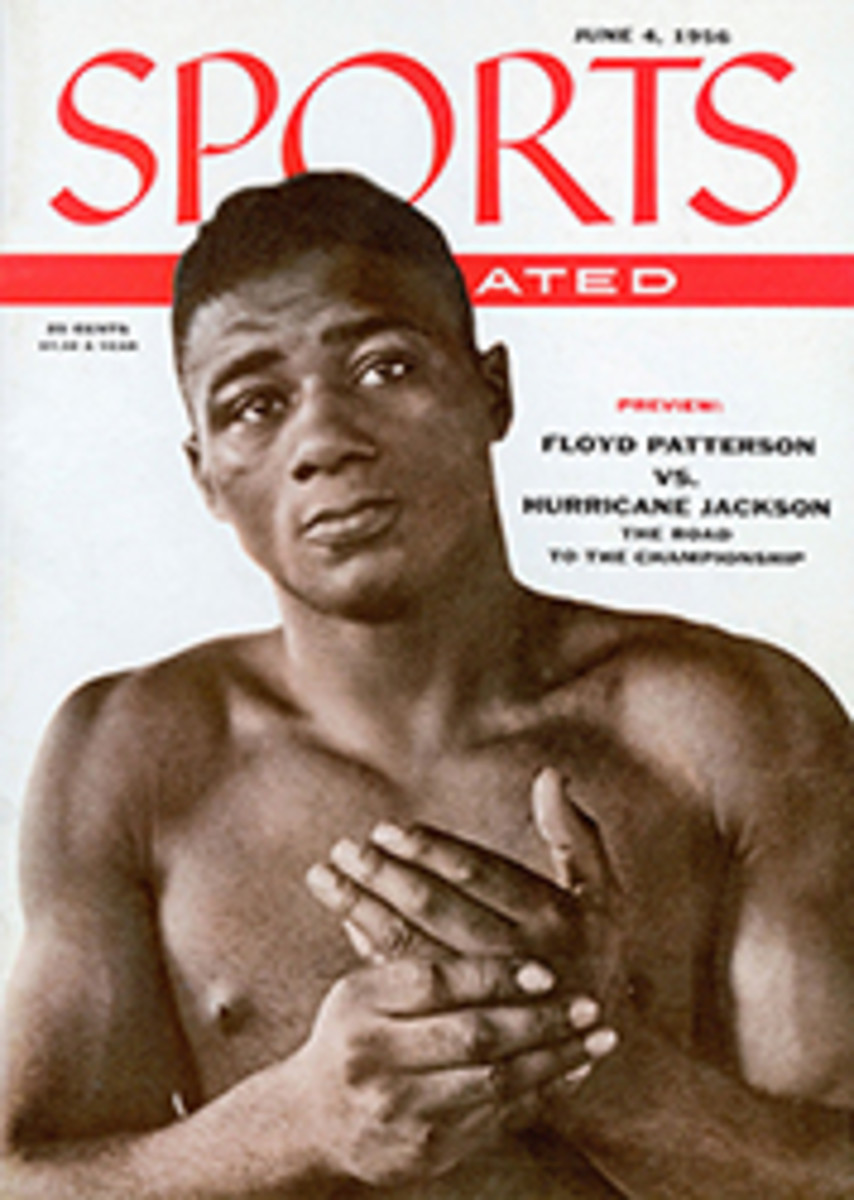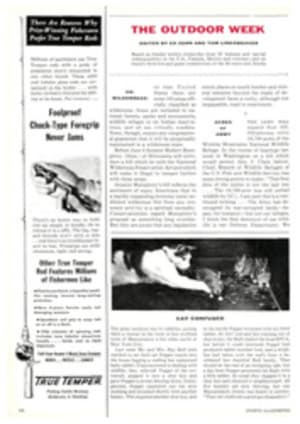
THE BLUE BOMBER
Many a grown man has had the wits scared out of him by a blue jay. Many a woman has fled in terror from this belligerent bird at nesting time. On one occasion a family had to use the back door to get into the house for several weeks because a pair of blue jays had built their nest in an evergreen shrub right beside the front door. Each time anyone came out of the front door he was dived upon by these birds in blue.
Many a person has felt an eerie tingle upon hearing the deep notes of a great horned owl. This terror of the night is one of the most ferocious of birds. It kills full-grown skunks. It has even carried off tomcats, and it thinks nothing of chasing a pair of eagles and then appropriating their nest. This footpad of the forest strikes on silent wings.
Many a reader of SI has taken delight in the wildlife photographs of David Goodnow. Dave is not as belligerent as a blue jay defending its nest in the daytime, nor is he as tough as a great horned owl as it hunts through the gloom of night. But Dave likes to consort with such creatures as owls and blue jays, on a friendly basis.
If you take this cast of characters—the blue-coated juggernaut, the terror of the night and the inquisitive photographer—and put them all in the proper juxtaposition, you get the rare display of avian activity in color on the following pages. Dave placed his owl in a tree near the blue jay nest and then stood by with his camera. He didn't have long to wait for action.
The pair which he selected to put on these gymnastics are two of the most controversial characters among our native birds. The great horned owl is a magnificent creature, both hated and admired. As a hunter, it will tackle animals weighing more than itself. It seems to prefer rabbits, when they are available, but it has been known to eat an astonishing range of fauna.
It will go after snakes as readily as it will an opossum. It will kill and eat other owls and hawks. It preys upon a variety of birds, including fat hens in the poultry yard and prize ducks from the pond of the waterfowl fancier.
This bird also is tough in other respects. It does its courting in wintertime and starts nesting long before migratory, birds have felt the urge to move northward. Instead of building its own nest, it will take over the nests of hawks and eagles whether the owners are around or not. It also raises its offspring (two or three) in caves and hollow trees.
Although it rules the night, the great horned owl frequently runs into trouble in the daytime. Just let a gang of crows discover an owl during daylight and pandemonium ensues. The mere presence of the owl drives the crows into a frenzy. Screaming madly, they circle the tree in which the owl has been apprehended. One after another they fly at the big enemy, each trying to outdo the bravado of the previous one. While one crow is making a pass close to the snapping beak, others sit by yelling like maniacs.
This hulking menace of the woods becomes even more ridiculous when set upon by blue jays. The blue jay belongs to the same family as the crow, the Corvidae, and shares many of the same raucous habits. Having reared their families of four to six young, they gather in bands and go wandering about the woods intent on mischief.
MISCHIEF MAKERS
On these forays they comprise a gaily dressed but loudmouthed gang. Their voices are harsh. At times they sound like a creaking pump handle and at other times they are imitating the scream of the red-shouldered hawk. Just try to sneak through the woods when a band of blue jays is on the prowl. They will advise the whole forest of your presence before you have walked a hundred yards.
They take delight in pestering other birds or some fox trying to take a nap. They are bright, they are gay, but they don't care a whit for the privileges of others. They do plant forests by burying acorns and then failing to dig them up, but this is accident rather than intent. And when they discover a great horned owl trying to remain inconspicuous in some pine tree they become as frantic as their cousins, the crows.
In daylight the owl is not much of a threat to the jay. The jay usually waits until the owl's head is turned away before it makes its dive. If the dive is already started and the owl turns around, the jay pulls out screaming. Little damage is done. The whole fracas is like a bunch of kids throwing snowballs at a cop.
Blue jays become even more belligerent and daring if they have a nest in the vicinity. Although only slightly larger than a robin, they don't hesitate to take a sock at the big terror of the night.
Infuriated by the proximity of the great horned owl to its nest, blue jay launches aerial attack marked by acrobatic didos.
IN SERIES OF DARING DIVES BLUE JAY TRIES TO OUTWIT BLINKING OWL. OWL DUCKS HIS SCREAMING ATTACKER AND TRIES TO BRING HIS POWERFUL BEAK INTO PLAY. OWL GETS SET (ON NEXT PAGE), BUT BLUE JAY APPLIES SAFETY BRAKES IN MID-AIR
WITH OWL ALERT IN DEFENSIVE POSITION, WISE JAY PUTS FOR HOME. FRACAS ENDS IN A DRAW
SEVEN PHOTOS
DAVID GOODNOW

